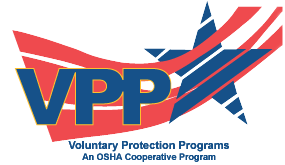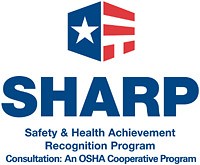
| U.S. Department of Labor |  |
|||||
| Occupational Safety & Health Administration | ||||||
 |
Target Industry Profiles
|
|
| Faced with both new challenges and persistent safety and health issues, the Occupational Safety and Health Administration (OSHA) developed a 5-year Strategic Management Plan that directs the Agency's resources towards three over-reaching goals, one of which focuses on the reduction of occupational injuries, illness, and fatalities. By 2008, OSHA's goal is to reduce the rates of workplace fatalities by at least 15 percent and workplace injuries
and illnesses by at least 20 percent. Each year, OSHA will emphasize specific areas to achieve this broader goal. In Fiscal Year (FY) 2003-2004, OSHA will reduce construction fatalities by 3 percent, general industry fatalities by 1 percent and overall injuries and illnesses by 4 percent. Emphasis will be on high incident/high severity industries, amputations in manufacturing and construction, ergonomics, blood-lead levels and silica-related disease. To accomplish the goals of fatality, injury, and illness reduction set forth in the Strategic Management Plan, an effort was made to identify a list of industries with high injury/illness rates and a high proportion of severe injuries/illnesses for focused targeting of outreach and enforcement activity. Several criteria were used in the identification of these industries. These criteria were as follows:
OSHA's Office of General Industry Enforcement has prepared profile documents for each of these seven industries. These profiles contain historical injury, illness, and fatality data for each of the industries, recent inspection statistics separated by OSHA Region (see http://www.osha.gov/html/RAmap.html for a detailed geographical breakdown of OSHA's 10 Regions), and the most frequently cited OSHA standards for each industry during the last fiscal year. Additionally, the profiles identify some of the common hazards associated with each of the industries and identify common sources of these hazards. These industries are targeted under the Federal OSHA Strategic Management Plan. States that administer their own approved Occupational Safety and Health (OSH) plans have their own strategic plans which contribute to the achievement of the national goals of injury, illness, and fatality reduction, but may target the same or different industries. For information on whether or not your State administers its own OSH program and details on those programs, please see OSHA's State Plan Directory web page and the State's own website. |
|
Cooperative Programs There are several avenues through which businesses and organizations can proactively work with OSHA. OSHA's Cooperative Programs offer different ways for business to address safety and health concerns and for OSHA to address the goals of its Strategic Plan. Two of OSHA's Cooperative Programs, the Voluntary Protection Program (VPP) and the OSHA Strategic Partnership Program (OSPP), offer assistance and recognition to businesses and organizations who choose to incorporate comprehensive safety and health management systems at their work sites and commit to providing a safe and healthful place to work. Typical results have been reduction in injury and illness rates and lost time case rate, reduction in Workers' Compensation costs, and an increase in morale and production. OSHA's Alliance Program enables organizations and associations to collaborate with OSHA through education, communication, and outreach while the Consultation and SHARP programs address safety and health at smaller worksites. Visit the websites listed below for more information or contact the Directorate of Cooperative and State Programs at (202) 693-2200. |
|
| Strategic Partnerships - Organizations can enter into Strategic Partnerships with OSHA to address specific safety and health issues and/or to improve new Safety and Health Management Systems. In a partnership, OSHA enters into an extended, voluntary, cooperative relationship with groups of employers, employees, and employee representatives (sometimes including other stakeholders, and sometimes involving only one employer) in order to encourage, assist, and
recognize their efforts to eliminate serious hazards and achieve a high level of worker safety and health. Web Location: http://www.osha.gov/dcsp/partnerships/index.html |
|
 |
Voluntary Protection Programs (VPP) - The VPP is designed to recognize and promote effective safety and health management. A hallmark of VPP is the principle that management, labor, and OSHA work together in pursuit of a safe and healthy workplace. VPP participants are work sites and companies who have successfully designed and implemented outstanding health and safety management systems. Web Location: http://www.osha.gov/dcsp/vpp/index.html |
| Alliances - OSHA's new program, Alliances, enables organizations committed to workplace safety and health to collaborate with OSHA to prevent injuries and illnesses in the workplace. OSHA and its allies work together to reach out to, educate, and lead the nation's employers and their employees in improving and advancing workplace safety and health. Groups that can form an Alliance with OSHA include employers, employees, labor unions, trade or professional groups, educational institutions, and government agencies. There are few formal program requirements for Alliances, and the agreements do not include an enforcement component. However, OSHA and participating organizations sign formal agreements and must meet short-term and long-term goals. Alliances support OSHA's Strategic Management Plan by addressing the plan's occupational trends, emerging issues, and Agency priorities, and by focusing on one or more of the following goals: training
and education; outreach and communication; and promoting the national dialogue on workplace safety and health. Visit the website listed below for more information or contact the Directorate of Cooperative and State Programs, Office of Outreach Services and Alliances at (202) 693-2340. Web Location: http://www.osha.gov/dcsp/alliances/index.html |
|
| Small Business Assistance
OSHA offers many resources designed specifically for small employers. The Agency wants to encourage all businesses to develop and implement safety and health programs and to find and fix hazards to prevent workplace injuries and illnesses. Examples of the many services and resources OSHA has to offer include the free on-site safety and health Consultation Program as well as the Safety and Health Achievement Recognition Program (SHARP). To find out more about what OSHA has to offer small businesses, visit http://www.osha.gov/dcsp/smallbusiness/index.html or contact the Office of Small Business Assistance at (202) 693-2213. |
|
 |
Consultation Program - Using a confidential nation-wide free consultation service, employers can find out about potential hazards at their worksites. The Consultation Program gives small business owners access to highly qualified occupational safety and health professionals at no cost. These professionals can assist business owners in developing and implementing effective safety and health management systems. The Consultation Program is completely separate from the OSHA inspection effort and no citations are issued or penalties proposed. In addition, the Consultation Program offers training and education to the employer and employees at the worksite. If you want more information about the Consultation Program, please visit http://www.osha.gov/dcsp/smallbusiness/consult.html or call (202) 693-2213. |
 |
SHARP - Through the Safety and Health Achievement Recognition Program the Consultation Program recognizes small employers who operate exemplary safety and health management systems. SHARP is designed to provide incentives and support to those employers that implement and continuously improve effective safety and health programs at their worksite. Upon receiving SHARP recognition, worksites are exempt from OSHA programmed inspections during the period that their
SHARP certification remains valid. If you want more information on SHARP, please visit http://www.osha.gov/dcsp/smallbusiness/sharp.html or call (202) 693-2213. |
| |
www.dol.gov | |
| Contact Us | Freedom of Information Act | Customer Survey Privacy and Security Statement | Disclaimers |
||
| Occupational Safety & Health Administration 200 Constitution Avenue, NW Washington, DC 20210 |
||